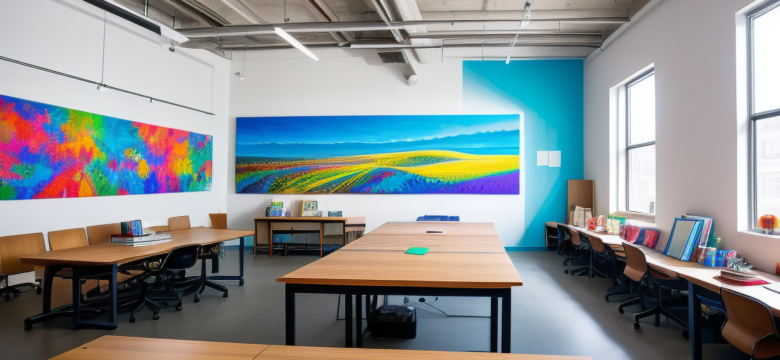Designing a workshop that participants rave about is both an art and a science. It’s not just about presenting information; it’s about creating an experience that resonates with your audience. Think of your workshop as a delicious meal; each ingredient must complement the others to create a memorable feast. Start by understanding your audience. Who are they? What do they want to learn? Tailoring your content to their specific needs is like seasoning a dish just right—too little, and it’s bland; too much, and it’s overwhelming.
Next, set clear objectives. These act as your roadmap, guiding both you and your participants through the journey. When everyone knows what to expect, it’s easier to engage and participate actively. Incorporate interactive activities to keep the energy high. Activities like group discussions or hands-on exercises can transform a passive learning environment into a lively forum of ideas and collaboration.
Effective facilitation is crucial. Use techniques like active listening and open-ended questions to encourage dialogue. A skilled facilitator is like a good conductor, ensuring that every voice is heard and every note in the workshop harmonises beautifully. Finally, don’t forget the importance of feedback. Gathering insights post-workshop not only helps you improve but also shows participants that their opinions matter. Remember, a workshop is just the beginning; provide resources for continued learning to create a lasting impact.
Understanding Your Audience
Grasping the essence of your audience is like holding the key to a treasure chest filled with possibilities. Imagine walking into a room full of eager faces, each one brimming with unique expectations and needs. It’s essential to identify these elements to tailor your workshop content effectively. By doing so, you not only capture their interest but also foster a sense of belonging and relevance.
To truly connect with your participants, consider implementing a few strategies:
- Conduct Pre-Workshop Surveys: Use simple questionnaires to gauge their interests and expectations.
- Engage in Social Listening: Pay attention to discussions on social media platforms related to your workshop topic.
- Utilise Personas: Create detailed profiles of typical participants to better understand their motivations.
By employing these techniques, you’ll be able to craft an experience that resonates deeply with your audience. Remember, the more you understand them, the more impactful your workshop will be. It’s not just about delivering content; it’s about creating a dialogue that inspires and motivates. So, are you ready to dive into the minds of your participants and unlock their potential?
Setting Clear Objectives
Establishing clear objectives is the bedrock of any successful workshop. Without them, it’s like sailing a ship without a compass—you’re bound to drift aimlessly! So, what makes a good objective? First off, they should be specific and measurable. Think of it this way: if your goal is to “improve skills,” that’s too vague. Instead, aim for something like “increase participant’s confidence in public speaking by 30%.” This clarity not only guides your content but also gives participants a tangible target to aim for.
Moreover, sharing these objectives at the beginning sets the stage for what’s to come. It’s akin to giving your audience a sneak peek of the fireworks display—they’ll be more engaged when they know what to look forward to! To ensure everyone understands, consider using a
| Objective | Description |
|---|---|
| Enhance Communication Skills | Participants will learn techniques to express their ideas clearly and confidently. |
| Foster Team Collaboration | Activities will encourage teamwork, leading to improved group dynamics. |
In conclusion, setting clear objectives not only aligns everyone’s expectations but also transforms your workshop from a mere gathering into a dynamic learning experience. Remember, when participants know what they’re working towards, they’re far more likely to stay engaged and leave with a sense of accomplishment!
Interactive Activities
When it comes to designing workshops that truly engage participants, are your secret weapon. Imagine a room full of people, not just sitting and nodding off, but actively participating, sharing ideas, and learning from one another. This vibrant atmosphere can be achieved through a variety of techniques that promote interaction and collaboration.
One effective method is to incorporate group discussions. By breaking participants into smaller teams, you allow them to delve deeper into topics, fostering a sense of community and shared learning. Additionally, hands-on exercises can transform theoretical concepts into practical applications. For example, if your workshop is about marketing strategies, you might have participants create a mock campaign in teams. This not only solidifies their understanding but also injects a dose of fun into the learning process.
Furthermore, consider using technology to enhance interaction. Tools like live polls or interactive quizzes can provide instant feedback and keep the energy levels high. Participants love to see their opinions valued and to engage with content in real-time. By integrating these activities, you create a dynamic learning environment that resonates with attendees long after the workshop ends.
Effective Facilitation Techniques
When it comes to facilitating a workshop, the magic often lies in the techniques employed to engage participants. Think of a skilled facilitator as a conductor of an orchestra, harmonising diverse voices and ideas into a beautiful symphony of learning. One essential technique is active listening. This means really tuning in to what participants are saying, not just waiting for your turn to speak. By paraphrasing their points and asking clarifying questions, you show that their contributions are valued, fostering a sense of trust and community.
Another powerful method is the use of open-ended questions. These invite deeper reflection and discussion, allowing participants to explore topics more broadly. For instance, instead of asking, “Did you like this exercise?” you might ask, “What insights did you gain from this exercise?” This subtle shift encourages a richer dialogue.
Incorporating visual aids can also enhance understanding. Consider using a





